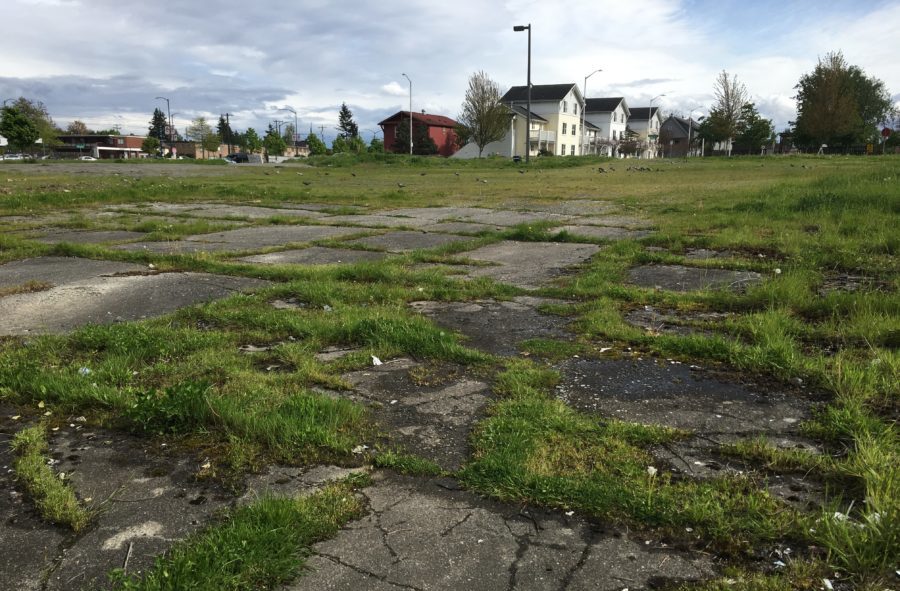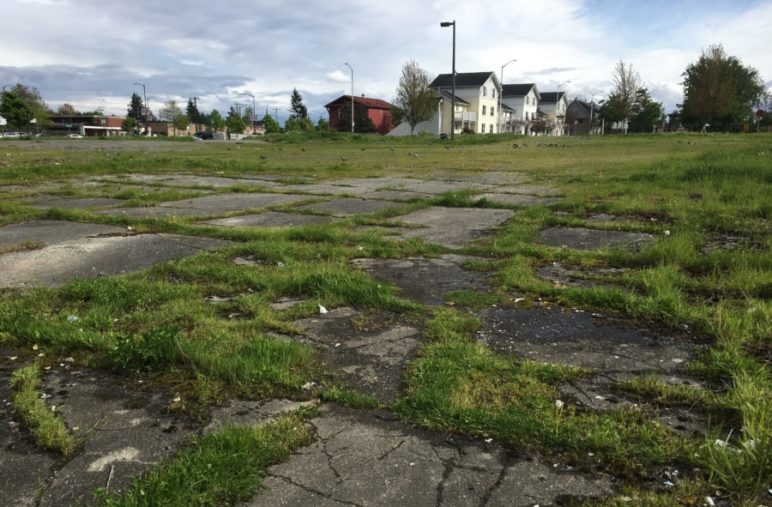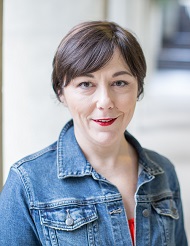The patch of ground at the southwest corner of Martin Luther King, Jr. Way South and South Othello Street, kitty-corner from the Othello light rail station in Seattle’s Rainier Valley, may not look like much now—an overgrown sidewalk, a few incongruously jaunty “O!hello!” signs, and a whole lot of weeds. But in the next few years, it could be Ground Zero for a new type of real-estate development—one championed by the City and local non-profits, working closely with community members, as a way to help keep vulnerable communities intact as the city changes by investing in cultural and economic anchors.The projects emerged from a community-driven process, led by social-justice groups like Puget Sound Sage and South CORE (Communities Organizing for Regional Equity) as well as several small-business associations in Southeast Seattle, that culminated in the city of Seattle’s Equitable Development Initiative, which aims to encourage (and help fund) developments that preserve communities at risk for economic displacement.
The development, known as the Southeast Economic Opportunity Center (SEEOC), is one of five planned equitable developments across Cascadia’s largest city. These city-blessed projects, driven by non-profit developers and community groups and funded by private investors, foundations, and city and state dollars, aim to help communities at risk of displacement prosper in place. They will preserve cultural institutions and provide opportunities for jobs, education, housing, and child care in areas of the city where rapid change threatens to fracture fragile communities.
The project, supporters hope, will not only provide affordable housing to Rainier Valley’s immigrant and refugee communities but will also serve as those communities’ social and cultural nexus. It will also offer job training, education, and employment in ground-level retail stores and restaurants, the center’s Seattle Children’s Hospital-run health clinic, a public charter school, and small-business incubators. The centerpiece of the Opportunity Center, a Multicultural Community Center serving eight discrete ethnic and cultural populations, would be community-owned and operated.
“If this community doesn’t own something, we’re going to get pushed out.”
-Tony To
“If this community doesn’t own something, we’re going to get pushed out,” says Tony To, director of the nonprofit housing developer Homesight, which is spearheading the project. “We have to own real estate. We have to own our own assets. We have to own our own programming. And this is not something that’s easy to do. This is not, frankly, something that Seattle is usually used to.”
Sitting in his office in a former Seattle Public Utilities building in the Columbia City neighborhood, To says his goal is to make the SEEOC “truly mixed-use”—not just the usual apartments over retail but cooperatively owned housing over community centers next to preschools next to business incubators. “I could envision people living there and owning a shop or a booth there or working in a health clinic while their kids go to school there,” To says. “That’s transit-oriented development. And that, right now, only exists in the privileged communities.”
From 2013, when the City added explicit race and social justice goals to its comprehensive plan, to last year, when the city created an equitable development fund and set aside $16 million from the sale of the Civic Center property downtown to establish the fund, plus $5 million to help leverage additional money for affordable housing, Seattle has recognized the importance of responding to displacement. For the city, displacement means not just physical displacement due to razing and redevelopment but the far more common phenomenon of economic displacement, which happens when rising rents force people, particularly low-income people and people of color, to move away from their longtime communities.
“The dual purpose of the Equitable Development Initiative (EDI) is preventing displacement and creating access to opportunity” in communities that were historically redlined, EDI manager Ubax Gardheere says. “When you build on a community’s cultural assets and invest in them, that helps to preserve the neighborhood and strengthen those cultural communities.”
To says he was “triggered” to throw his organization’s financial clout behind the proposal “when [the developer] Vulcan purchased the Promenade”—that’s Promenade 23, the Red Apple-anchored Central Area shopping center—“for $39.5 million. When that happened, I said, ‘You know what? That cannot happen [at Othello Station]. If we don’t act, that’s what’s going to happen. Some developer’s going to come in and offer some ridiculous amount of money, and then, that’s it. That chance is gone.”
“When you build on a community’s cultural assets and invest in them, that helps to preserve the neighborhood and strengthen those cultural communities.”
-Ubax Gardheere
District 2 city council member Bruce Harrell and former state senator, now Congresswoman Pramila Jayapal were instrumental in securing early funding to study the feasibility of the project. Harrell says he was motivated by a shortage of high-paying jobs, and training for those jobs, in Southeast Seattle, the most diverse area of the city. The Rainier Valley was identified in the city’s comprehensive plan as one of several “high-risk, low-opportunity” areas—areas in which opportunities for jobs and education are scarce,and the risk of economic displacement is high.
“When you close your eyes and think of the booming high-tech industry, and the demographics that are getting these jobs, and the economic activity that surrounds these industries, you think either South Lake Union or Pioneer Square,” Harrell says. “You certainly don’t think of Southeast Seattle. But with light rail making it easier for people to get north and south in the city, why can’t we look at small business development and entrepreneurship and tech training down here? I think it’s going to prepare a different demographic for these jobs that are going to be hot in next five to ten years.”
Last month, dozens of community members gathered at the Ethiopian Community Center in Rainier Beach to hear from the planners, architects, developers, and community groups that have spent the past several years planning the Southeast Economic Opportunity Center.
As the audience balanced plates of sambusas, glass noodles, and chicken shwarma on their laps, Homesight’s To gave an overview of the project’s history—from a 2014 study that concluded that Southeast Seattle lacked culturally appropriate access to education, jobs, and employment services, to the current plan, which To called “a stake in the ground” for the community.

Artist’s rendering how the SEEOC might look when fully built out, looking south from Othello Street. by Anita Lehmann and Homesight (Used with permission.)
If the Opportunity Center gets built, the $173 million project would be the most ambitious equitable development ever attempted in Seattle. “When I saw that [cost estimate], I said, ‘Holy crap—$173 million! And you know what? Seventy percent of that is accounted for,” To said. “It’s not all secured, but we know where the money’s coming from.”
There are still plenty of potential speed bumps. The Seattle Housing Authority, which owns the property, must agree to sell, so supporters of the SEEOC have been asking community members to send postcards supporting the project, and getting the Seattle City Council to do the same. The planned Multicultural Community Center, which lost four of its twelve original community-based partner organizations, has a more complex financing plan than the rest of the development, and will require a three-year, $17-million capital campaign, Homesight’s first.
Advocates for the project must also sell the surrounding community on Seattle’s first charter high school, a STEM-focused college prep school run by the controversial California-based nonprofit Green Dot Schools. Asmeret Habte, a member of the Multicultural Community Center Coalition, said she understood that charter schools are “controversial.” But, she added, “Our community members are sending their kids to private schools and taking on other jobs to pay for it. I hear from community members that Seattle Public Schools is failing them. So if that’s what we’re hearing from community members, we’re going to listen.”
“If we do not give our community a reason to fight to stay here, they will all be gone.”
-Tony To
To says he understands the risks associated with attempting a new kind of development to serve a community that has already started to abandon Seattle for places like Kent, Burien, and Tukwila. He hopes it isn’t too late. “We want this to be people of color feeling that they get enough out of the physical parts of this project”—the community center, the clinic, the charter school—“that they want to fight to stay in this community. If we do not give our community a reason to fight to stay here, they will all be gone. . . . That’s really the point of this project.”
In addition to the Southeast Economic Opportunity Center and Multicultural Community Center, Seattle has identified other community-initiated equitable development projects as priorities for mitigating displacement and increasing economic opportunity. They include:
- The Rainier Beach Innovation District, a transit-oriented development that would include a Food Innovation Hub with production kitchens, job training, co-packing facilities where small food businesses could pool resources to manufacture and package their products, and a business incubator. The goal of the Innovation District would be to bring living-wage jobs, education, training, and entrepreneurial opportunities to existing Rainier Valley residents.
- The William Grose Center for Cultural Innovation, a hub for entrepreneurship and business incubation in the Central Area focused on creating access to tech and creative jobs for communities that have traditionally been excluded from those industries.
- The Little Saigon Landmark Project, a mixed-use project in the Little Saigon neighborhood, just east of the Chinatown/International District, that would include affordable housing aimed at the Vietnamese American community, a cultural center, a Southeast Asian grocery store, and a traditional Asian night market.
As many economic and political hurdles as the Southeast Economic Opportunity Center still faces, it remains the furthest ahead of these equitable development projects; the others are either still in their nascent stages (the Grose Center) or have been delayed by circumstances outside their supporters’ control (the Rainier Beach Food Innovation District). If the “stake in the ground” surmounts its own political and financial hurdles, the SEEOC will break ground next year, and open to the community in 2021.
Guest contributor Erica C. Barnett is a veteran reporter who covers Seattle politics and policy at her blog The C Is for Crank.












Comments